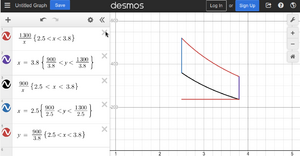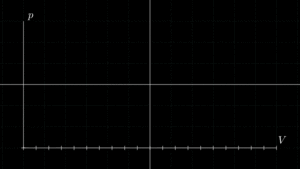Otto Cycle: Difference between revisions
From wikiluntti
| (4 intermediate revisions by the same user not shown) | |||
| Line 2: | Line 2: | ||
[[File:OttoCycle pvDiagram simple.png|thumb|Otto Cycle]] | [[File:OttoCycle pvDiagram simple.png|thumb|Otto Cycle. ]] | ||
Piston and cylinder. | Piston and cylinder. | ||
| Line 10: | Line 10: | ||
# Isobaric expansion: Intake | # Isobaric expansion: Intake | ||
# Adiabatic compression | # Adiabatic compression | ||
# Isochoric | # Isochoric heating (Qin): Combustion of fuel (heat is added in a constant volume; the burning of the gasoline-air mixture is instantaneous) | ||
== Ideal Gas and Ideal Otto == | == Ideal Gas and Ideal Otto == | ||
[[File:Ottocycle.gif|thumb]] | |||
[[File:Otto.zip]] | |||
== More realistic Otto cycle == | == More realistic Otto cycle == | ||
Latest revision as of 11:35, 17 August 2024
Introduction

Piston and cylinder.
- Adiabatic expansion process power. Combustion ends and power stroke begins.
- Isochoric cooling (Qout): Heat rejection. Power stroke ends, heat rejection starts.
- Isobaric compression: Exhaust
- Isobaric expansion: Intake
- Adiabatic compression
- Isochoric heating (Qin): Combustion of fuel (heat is added in a constant volume; the burning of the gasoline-air mixture is instantaneous)
Ideal Gas and Ideal Otto
